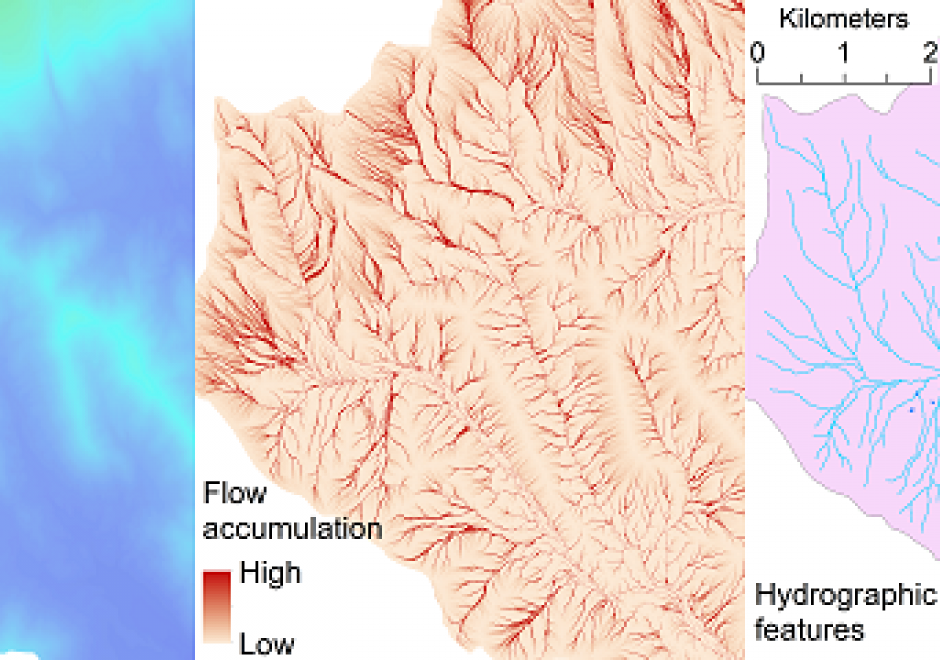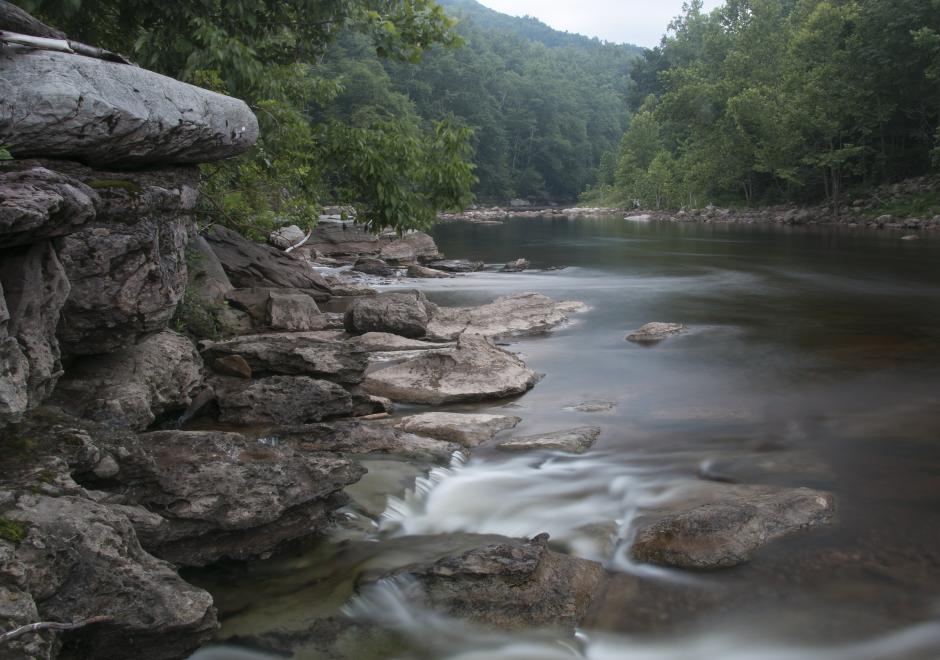AM-66 - Watersheds and Drainage Networks

This topic is an overview of basic concepts about how the distribution of water on the Earth, with specific regard to watersheds, stream and river networks, and waterbodies are represented by geographic data. The flowing and non-flowing bodies of water on the earth’s surface vary in extent largely due to seasonal and annual changes in climate and precipitation. Consequently, modeling the detailed representation of surface water using geographic information is important. The area of land that collects surface runoff and other flowing water and drains to a common outlet location defines a watershed. Terrain and surface features can be naturally divided into watersheds of various sizes. Drainage networks are important data structures for modeling the distribution and movement of surface water over the terrain. Numerous tools and methods exist to extract drainage networks and watersheds from digital elevation models (DEMs). The cartographic representations of surface water are referred to as hydrographic features and consist of a snapshot at a specific time. Hydrographic features can be assigned general feature types, such as lake, pond, river, and ocean. Hydrographic features can be stored, maintained, and distributed for use through vector geospatial databases, such as the National Hydrography Dataset (NHD) for the United States.


DA-32 - GIS&T and Natural Resource Management
Geographic Information Systems (GIS) is a geospatial technology that has matured with the help of natural resource management applications. Since its early beginnings as an extension of cartography, GIS has been used to capture, manipulate, store, analyze and manage data. GIS has matured as additional sciences began to adopt and apply it to multidisciplinary problems. In the mid-90s, much of the emphasis moved to desktop GIS making the access and use more mainstream and capable on personal desktop computers. Government agencies with more available and distributed datasets through the internet enabled more applications and use across disciplines because of the access. Soil scientists, wildlife biologists, hydrologists, engineers, planners, and others could now pursue spatial problems efficiently and effectively. More and more advances were being made in the sciences due to the new technology. The following discussion will focus on the use and applications of GIS for natural resource management. Areas covered in this review will be for forestry, watershed analysis, wildlife management, and landscape analysis. First a background of the applications will be introduced followed by a discussion of their applicability and uses.